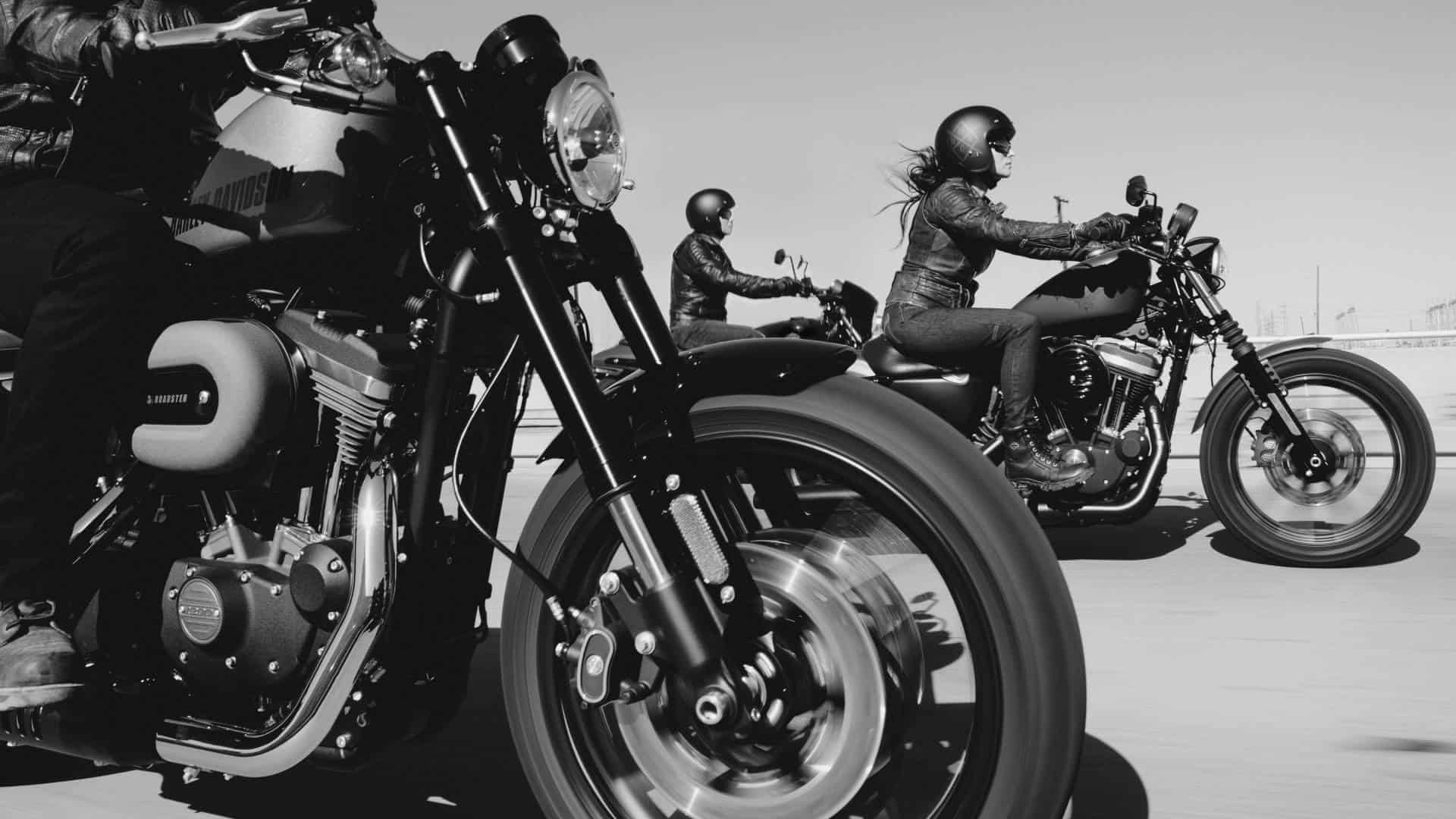South Dakota offers beautiful roadways for scenic motorcycle rides, and stunning streets and nature paths for biking. Understanding South Dakota’s motorcycle laws can help you protect yourself on the road, as well as take appropriate action if you’re ever harmed while riding.
In this guide, we’ll explore laws related to motorcycling and biking in South Dakota, and offer safety tips to help you have a safe and enjoyable experience.
If you have been injured in a motorcycle accident, you may want to speak with a personal injury attorney to discuss whether your case is eligible for compensation. The team at Alvine Law Firm in Sioux Falls, SD, brings experience and passion to their profession, working hard to help every client recover damages after an accident.
Overview of South Dakota Motorcycle Laws
South Dakota has laws regulating motorcycle licenses, including an age requirement, helmet laws, and insurance regulations. Below, we explore each of these points in detail.
South Dakota Motorcycle License Requirements
Riders must be at least 16-years-old and hold a valid South Dakota driver’s license or state ID to get a motorcycle license. If you don’t have a license or ID, you must bring a valid form of identification, such as a certified U.S birth certificate, non-expired passport or permanent resident card.
Visit the South Dakota Department of Public Safety to learn more about document requirements for a license.
All bikers must obtain an instruction permit first and complete a written knowledge and vision test to be eligible for their license.The instruction permit is valid for one year, and riders can operate their bikes between the hours of 6:00 AM and 8:00 PM.
All permit-holders must ride accompanied by a licensed motorcyclist who is at least 18. The supervisor must have at least one year of riding experience. Permit holders in South Dakota are not allowed to ride with any passengers on their motorcycle. You cannot ride with passengers until you are fully licensed.
Necessary Documents
- Valid South Dakota’s driver’s license, state ID or required identity paperwork
- Two documents with proof of current address
- Completed motorcycle license application
Testing Requirements
You must pass the written knowledge exam with a score of 80% or higher, a vision test and motorcycle driving test. During the driving test, you must wear a helmet, boots and leathers.
Helmet Laws
Under South Dakota Codified Law 32-30-4, all individuals under 18 must wear a helmet that meets the Department of Transportation Motor Vehicle Safety Standard 218. Failure to do so can result in a Class 2 misdemeanor.
Equipment Regulations
According to South Dakota Codified Laws, every motorcycle must have one but no more than two headlamps, as well as one tail lamp (§ 32-17-2, 32-17-5, and 32-17-6). The handlebars cannot be higher than the rider’s shoulders (§ 32-20-3), and a motorcycle rider must wear a protective eye device unless the motorcycle has a windshield that sufficiently protects the operator (§ 32-20-4.1).
Insurance Requirements for Motorcycle Operators in South Dakota
All motorcyclists must carry proper insurance coverage to legally operate on South Dakota roads. This includes:
- Bodily injury liability or death of one person: $25,000
- Bodily injury liability or death of two or more people: $50,000
- Damage liability or destruction of property: $25,000
Driving without proper liability insurance is a Class 2 misdemeanor in South Dakota. This can result in 30 days in county jail and/or a $100 fine, license suspension for 30 days to one year. You will also have to file proof of insurance (SR-22) with the state for three years from your data of conviction.
Traffic Laws Specific to Motorcyclists
Driving a motorcycle in South Dakota comes with its own respective operating laws, such as:
- Speed limits on two-lane highways. Operators must slow to at least 20 miles per hour below the speed limit or to 5 miles per hour if the speed limit is 20 miles per hour or less (§ 32-31-6.1).
- Speed requirements on interstate highways. Motorcycle operators can face a Class 2 misdemeanor charge if they drive under 40 miles per hour on an interstate highway (§ 32-25-5).
- Riding position. All motorcycle operators must face the front of the bike with at least one hand on the handlebars while the motorcycle is moving (§ 32-20-6.2); violation of this law is a class 2 misdemeanor.
- Passenger restrictions. Only one person can ride in the permanent seat of the motorcycle, and passengers can only ride on bikes made for two people or in a seat firmly attached to the side or back of the bike (32-20-6.1).
Pre-Ride Preparation
Before heading out on the road, motorcycle operators should make sure their bikes are in good working order. This includes performing routine checks for tire pressure, brake functional and fluid levels.
Routine servicing and inspections keep motorcycles running well, and they keep operators, pedestrians and other drivers on the road safe.
Route Planning
Before riding a motorcycle in South Dakota, research road conditions for your intended route. Stay mindful of weather forecasts and be willing to change your plans or cancel your ride if inclement weather strikes.
You should also take regular stops for fuel. Make sure that you are aware of gas stations on your route, so you are fully prepared along your trip.
Emergency Preparedness
Let a trusted friend or family member know where you are going when you ride a motorcycle. You can share your location with them on your phone using live tracking with Apple’s Find My Friends and Google’s Family Link. This can offer a real-time update of your location as you ride.
You should also make sure your phone is fully charged and have a tool kit and first aid kit with you. Consider wearing a medical ID bracelet that includes your name, address, allergies, blood type, and emergency contact information.
Riding Techniques and Safety Tips
Motorcycle operators in South Dakota can protect themselves by practicing defensive riding. Stay aware of your surroundings, and be mindful of other drivers’ actions. Keep a safe following distance, and always respect the rules of the road.
Follow all of your motorcycle instruction training closely. Use proper cornering and braking techniques. When riding in groups, use communications signals and maintain proper formation.
Single-file lines are common for small groups, while larger ones may use a V formation with a head motorcycle operator in the front and the others behind them. Maintaining space between other riders can help prevent accidents and injury.
Dealing with Road Hazards
Be mindful of common road hazards while you drive, such as:
- Potholes
- Gravel
- Debris
You should also take precautions when riding in areas with high wildlife activity. If you encounter an animal on the road, slow down if you can safely do so. Avoid swerving into traffic or braking suddenly, which could cause an accident. If there is no oncoming traffic, you can try to use high-beam headlights to scare the animal away.
Be sure to also adjust your riding techniques for rain, wind or extreme heat and cold. Be mindful of what you wear, too, so you can safeguard yourself against severe injuries in the event of a collision.
Conclusion
South Dakota’s motorcycle laws and licensing requirements help keep bikers and motorists safe. Understanding the laws can help you avoid unintentional violations and negative consequences.
If you suffer a motorcycle accident and want to take legal action, the team at Alvine Law Firm can help. Our expert team of personal injury attorneys in Sioux Falls, SD, are always here to help. We fight tirelessly on our clients’ behalf to help them get the justice they deserve.
Click here to schedule a free consultation, or call our law firm at
References
South Dakota Motorcycle Laws | South Dakota Department of Public Safety
South Dakota Motorcycle Manual | South Dakota Department of Public Safety (PDF)
South Dakota Revoked & Suspended Licenses | South Dakota Department of Public Safety
Codified Law 32-17 | South Dakota Legislature
Codified Law 32-20 | South Dakota Legislature

